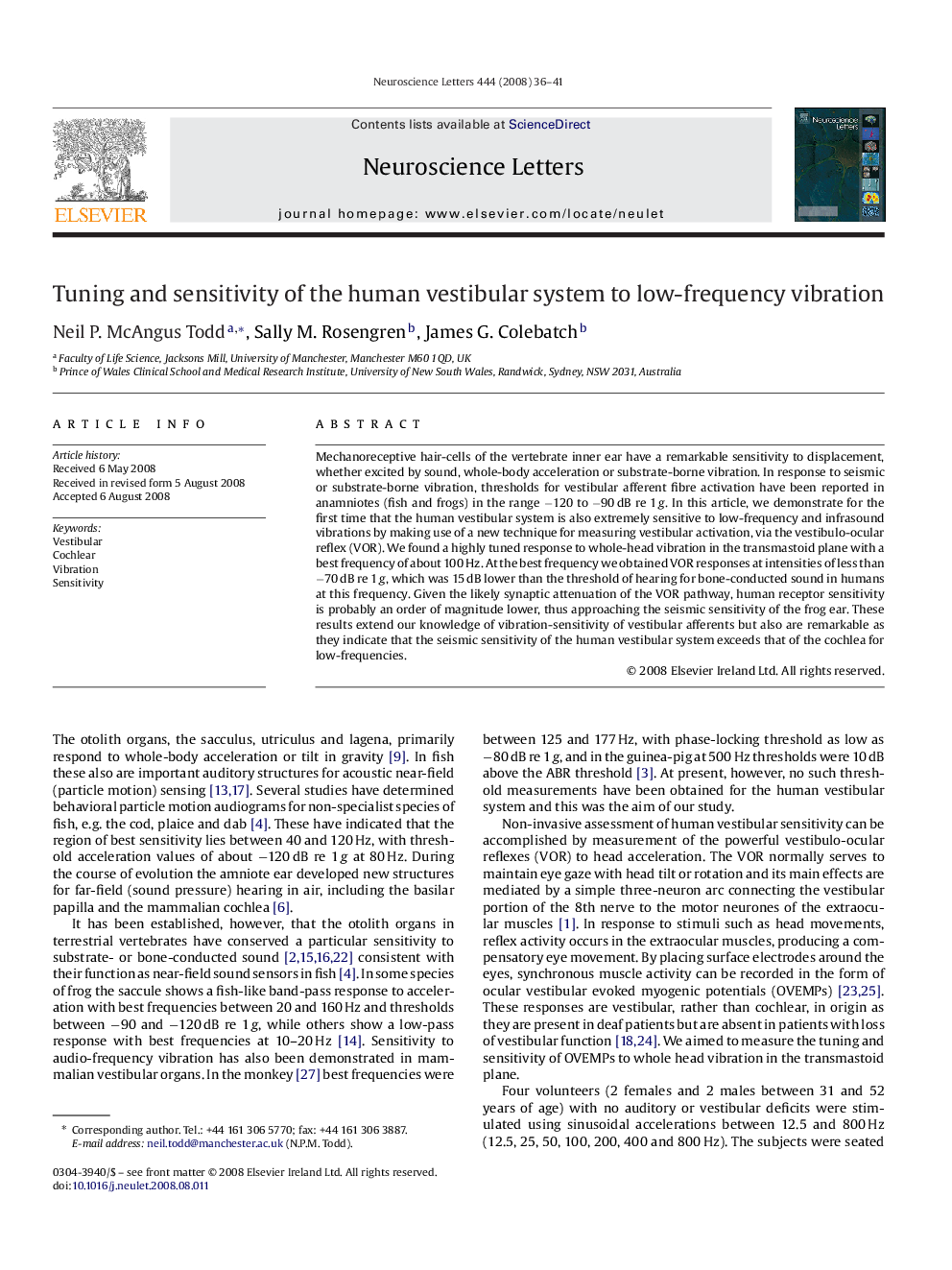| Article ID | Journal | Published Year | Pages | File Type |
|---|---|---|---|---|
| 4347785 | Neuroscience Letters | 2008 | 6 Pages |
Mechanoreceptive hair-cells of the vertebrate inner ear have a remarkable sensitivity to displacement, whether excited by sound, whole-body acceleration or substrate-borne vibration. In response to seismic or substrate-borne vibration, thresholds for vestibular afferent fibre activation have been reported in anamniotes (fish and frogs) in the range −120 to −90 dB re 1 g. In this article, we demonstrate for the first time that the human vestibular system is also extremely sensitive to low-frequency and infrasound vibrations by making use of a new technique for measuring vestibular activation, via the vestibulo-ocular reflex (VOR). We found a highly tuned response to whole-head vibration in the transmastoid plane with a best frequency of about 100 Hz. At the best frequency we obtained VOR responses at intensities of less than −70 dB re 1 g, which was 15 dB lower than the threshold of hearing for bone-conducted sound in humans at this frequency. Given the likely synaptic attenuation of the VOR pathway, human receptor sensitivity is probably an order of magnitude lower, thus approaching the seismic sensitivity of the frog ear. These results extend our knowledge of vibration-sensitivity of vestibular afferents but also are remarkable as they indicate that the seismic sensitivity of the human vestibular system exceeds that of the cochlea for low-frequencies.
